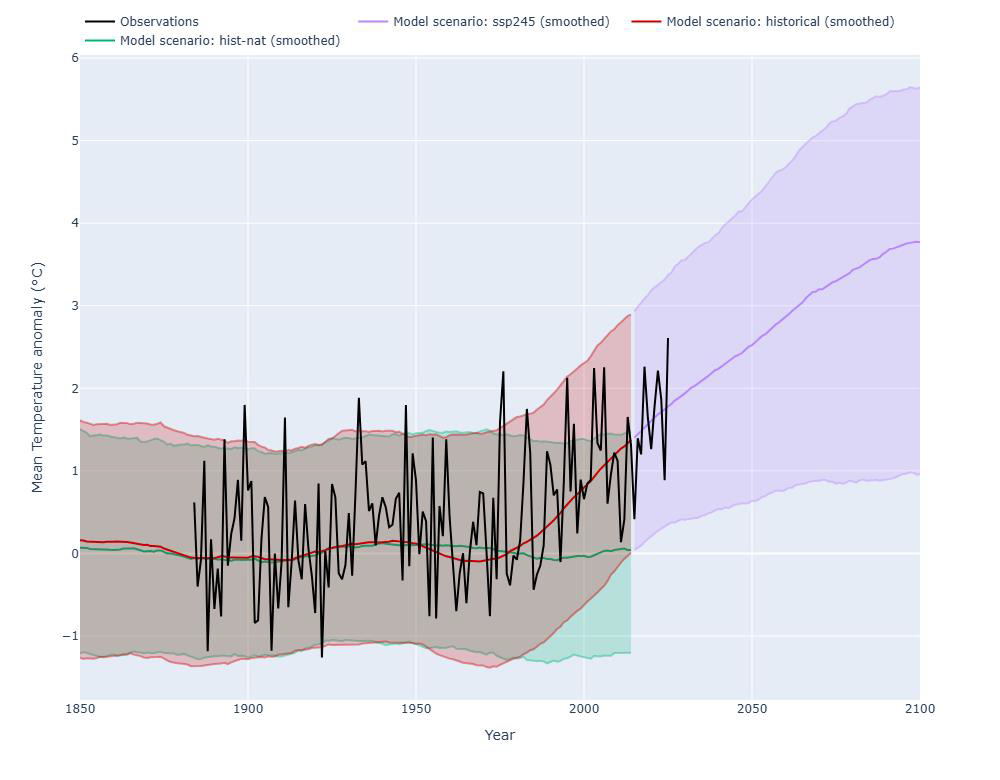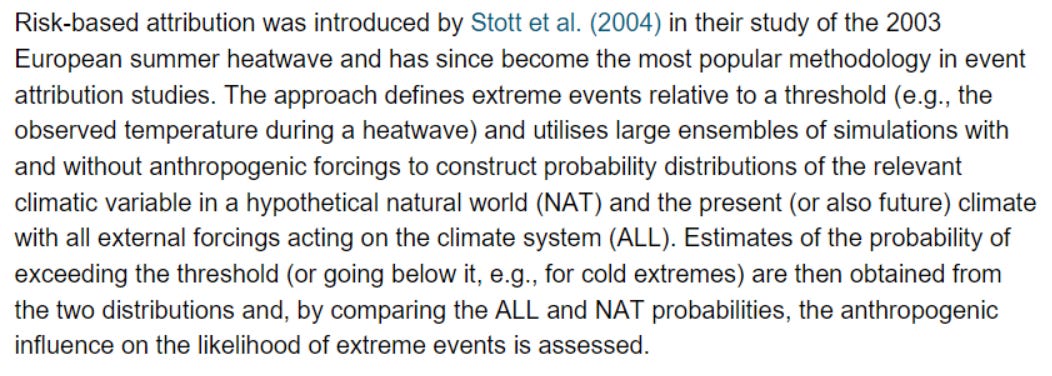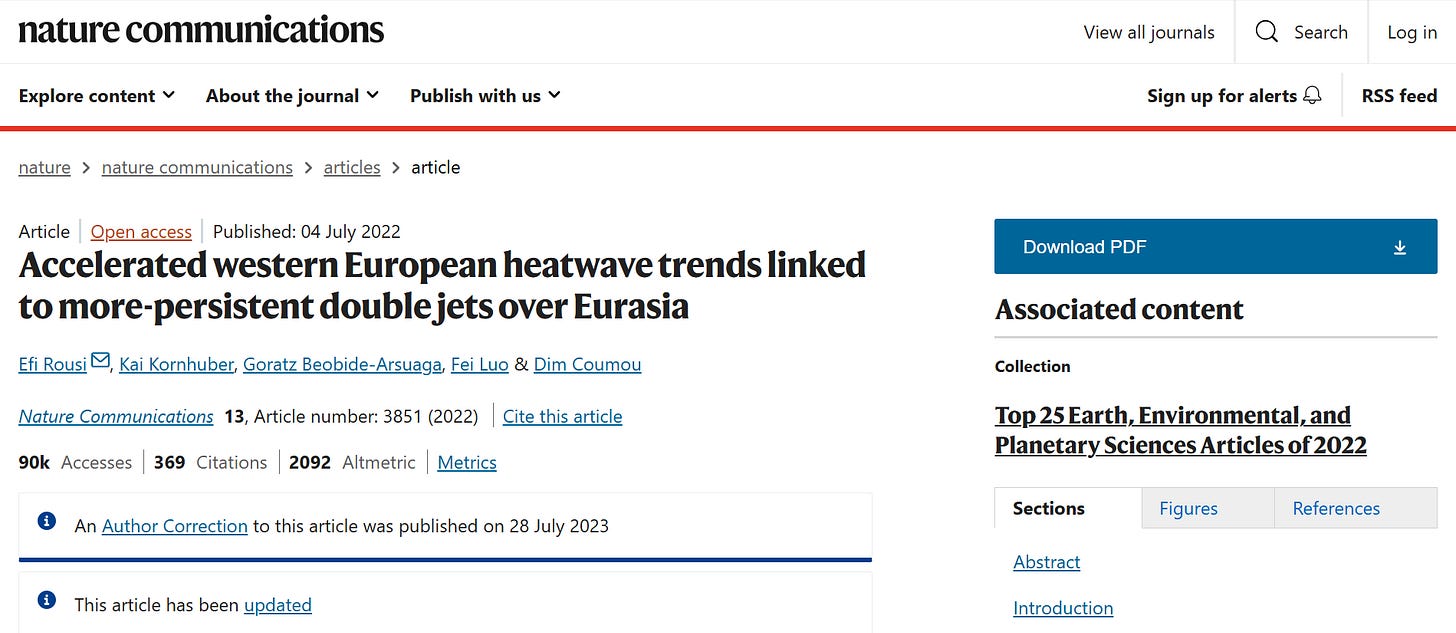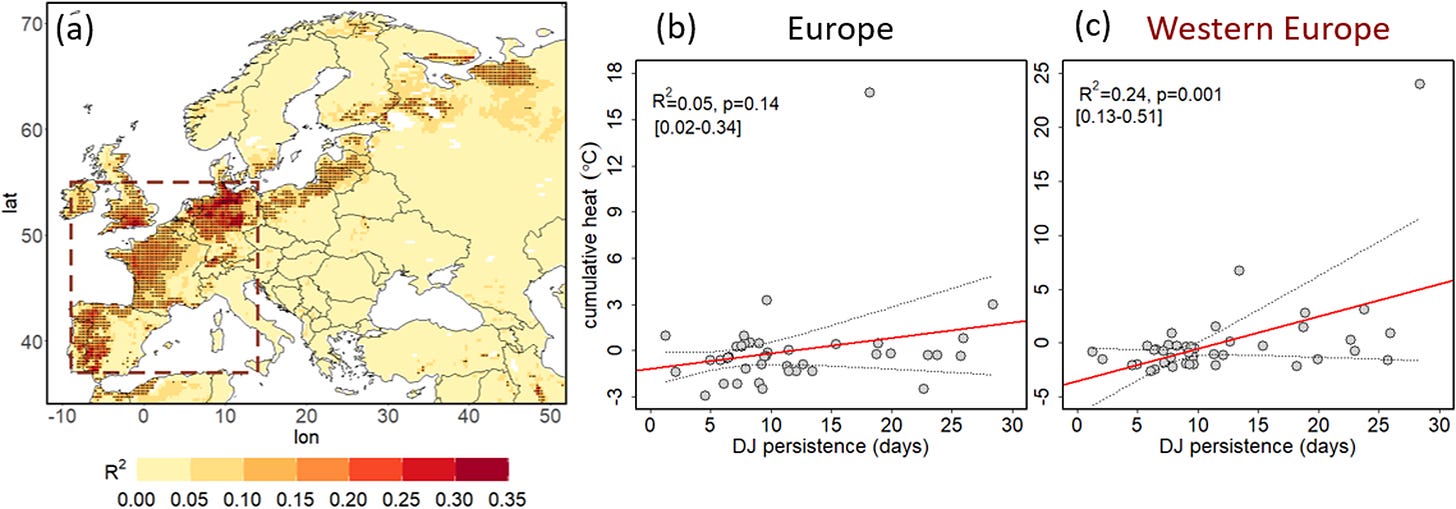Exposing The Pseudoscience Behind The Met Office's Attribution Of The Nothingburger Summer Of 2025 To Climate Change
It was far from the hottest, driest, or sunniest summer since 1884 and the only thing which marked it out as being unusual was the large jump in minimum overnight temperatures, meaning that on this metric alone, summer 2025 was warmer than the previous record minimum overnight temperatures set in summer 2003.
The Nothingburger Summer Of 2025 Was Not The Hottest, Driest Or Sunniest
It was the ‘hottest’ summer on record whilst you were sleeping. It was nowhere near the driest or sunniest.
But in their wisdom, the Met Office have boldly claimed that, because the mean overall daily temperature in 2025 is now the highest since 1884, this means that “a summer temperature as high as 2025 has been made around 70 times more likely because of human induced climate change.”
The average person is supposed to just take that as read without checking the Met Office’s Settled Science calculations. If you believe Sly News, you’ll also take it on authority that because of climate change and ‘persistent heat’, we got a ‘false autumn’ and there were hosepipe bans during summer 2025, just like in 1976, but much worse of course, because 1976 is now not even in the top 5 hottest summers evah.
But I’m not your average person who gets my ‘facts’ from mainstream media and neither are my readers, so here goes with my attempt to look under the hood of this decidedly dodgy ‘extreme weather attribution’ study which will necessarily be long and quite technical, so for those who don’t want to wade through it, please skip to the summary at the end.
Setting the Scene
Here is how the Met Office introduce their study:
Summer 2025 was the hottest on record for the UK, driven by persistent high-pressure conditions resulting in a season punctuated by four notable heatwave periods, and extended periods of clear skies resulting in a season that was also drier and sunnier than average.
So straight off they admit that the proximate cause of the hot summer was the persistence of high pressure over the UK. This is atmospheric circulation (dynamics), i.e. weather, not thermodynamics (radiative forcing of the UK climate). It was hot because high pressure settled over the British Isles, just like it did in 1976, though in ‘76 the high pressure was far more persistent and the summer was persistently hotter, drier and sunnier as a result.
But no matter, ignoring what they’ve already admitted caused the high temperatures, the Met Office authors then go on to tell us how they’ve conducted a rapid attribution analysis to quantify the anthropogenic (thermodynamic) influence on our ‘hottest summer evah’.
A rapid attribution analysis was conducted to quantify the human-influence on the likelihood of reaching or exceeding the 2025 summer mean temperature. The approach provides estimates of the exceedance probability of similar events in the climate of a ‘natural’ world, the climate of the present day, and that of the end of the 21st Century.
The analysis was conducted using a system developed by the Met Office for rapid studies and described in Christidis (2021). This uses climate models from the Coupled Model Intercomparison Project Phase 6 (CMIP6, Eyring et al., 2016).
Having just admitted that dynamics set the scene for the four heatwaves which occurred during summer 2025, you might expect the Met Office (which studies the weather - i.e. dynamics) to quantify and compare the relative contributions from anthropogenic and natural causes to the hot summer, and in fact they do, in a way, but their natural (counterfactual) simulation is merely the absence of GHG radiative forcing in a supposed pre-industrial climate, which includes only natural radiative climate forcings like solar and volcanic and maybe some (probably inadequate) quantification of internal climate variability. It most definitely does not include the influence of the weather (dynamics) on the occurrence of the four heatwaves which in essence caused 2025 to be warmer than average during the daytime (but not record-breaking hot). It was the night time minimum temperatures which made 2025 so warm.
The Meteorological Office Ignores Meteorology
Here’s what the Met Office say about their ‘data’:
Observed values of the UK summer mean temperature are obtained from the HadUK-Grid dataset v1.3.1.0 (Hollis et al., 2019; Met Office, 2025). The time series contains UK monthly means spanning January 1884 – August 2025, with the 2025 values being provisional at the time of writing. Summer mean values are obtained by averaging this monthly data over summer months of June, July and August, appropriately weighted by the number of days.
Maybe I’m being pernickety, but mean temperature, on a daily basis, is not an observation, it is a simple statistical analysis of two observations: daily maximum and minimum recorded temperature. If the Met Office is thorough enough to explain how they then go on to average these means for the three summer months, why can’t they explain how they average the daytime max and min temperatures to get the daily mean? It’s bizarre. They want us to believe that the mean is an observable, physical quantity. It isn’t.
Then there’s the rest of the ‘data’:
Model data is taken from 14 CMIP6 models that provide ensemble members for each of the natural (hist-nat) and historical (historical) climate experiments as well as projections from the SSP2-4.5 scenario (ssp245, Riahi et al., 2017). The hist-nat experiment provides simulations of the pre-industrial climate and the historical experiment provides simulations of the changing climate under observed climate forcings. The SSP2-4.5 projections are valid from 2015 onwards and are chosen as a “middle of the road” scenario for mitigation and adaptation to climate change. These projections see moderate global population growth and uneven development, that may remain a close analogue of the real world. The names of models and the number of ensemble members used from each are shown in Table 1.
The general idea here is to run the models both with (historical) supposed anthropogenic greenhouse gas climate forcings and without (hist-nat) those forcings. Neither historical or hist-nat contain any specific data concerning the weather (meteorology). The idea is, you can ignore the weather and any short term climate variability because the period you are looking at is sufficiently long. Really? How long is ‘long’? Not really that long as it happens:
Time series of the observed and modelled UK summer mean temperature anomalies are shown in Fig. 3. Increasing summer temperatures are shown in both observations and the historical and ssp245 simulations, with further increases projected through the rest of the 21st Century. This shows a steadily increasing likelihood of higher than average summer temperatures being experienced in the UK. The historical and hist-nat ensembles start to diverge from around the 1980s suggesting that climate forcings arising from human influence are the dominant factor in the observed warming trend.

All looks very convincing doesn’t it? The models quite faithfully simulate the observed rise in summer temperatures since about 1980, so the observed rise in summer temperatures must be due to anthropogenic GHGs right? Wrong. The model experiments only ‘suggest’ that is the case - even the Met Office admits this (in the bold text above). What’s missing? The weather. Atmospheric dynamics. Multidecadal internal natural variability which might affect the weather (dynamics) over periods as long as 40 years or more (i.e. since the 1980s).
The Christidis Attribution Methodology
The Met Office authors say:
The method employed is to find exceedance probabilities of the 2025 UK summer mean temperature in the natural world climate without human influence (nat), the current day climate (now) and that of the end of the century (end). The nat climate is represented by collating all available years from the hist-nat simulations (1850 - 2020). The now climate is represented by taking all data from the 20-year period 2015 – 2034 that is centred on 2025, from the historical simulations up to 2014 and continued by ssp245. The end climate is represented by all data taken from the final 20 years of the ssp245 experiment (2081 - 2100).
On the evaluation of the models against actual observations, they say:
The models were evaluated against the HadUK-Grid observations, as presented in Figure 4. Several evaluation tests commonly employed in event attribution studies (Christidis et al., 2013, Christidis, 2021) are conducted on the full multi-model ensemble of historical simulations over the evaluation period 1884 – 2014, which is the overlap of the historical experiment with availability of the observations. This provides over 20,000 years of model data.
I’ve been here before. In 2022, I criticised Met Office attribution pseudoscience and in particular the Christidis methodology:
Met Office Pseudoscience
You’ve maybe heard of extreme weather attribution, where ‘scientists’ attempt to attribute a heatwave, storm or flood etc. to man-made climate change, some time after the event. You’ve heard of rapid extreme weather attribution where they fall over themselves to get the attribution done as quickly as possible whilst the event is still fresh in people’s …
Here’s what I said back then:
Firstly, let’s take a brief look at Christidis, 2021, which is the method used to attribute this heatwave in ‘near real time’. Note it’s written by the same author, so not exactly an independent verification.
The paper starts off with the usual blah, blah, blah about attribution studies and comparison of risk of an observed extreme event happening with and without anthropogenic forcings, generated using sophisticated computer models to arrive at a fraction of attributable risk. This ‘scientific’ method was pioneered by Peter Stott of the Met Office in response to the exceptional European heatwave of 2003. For those interested, I wrote about this and the heatwaves of 2018 and 2019, in the context of the 1947 central European heatwave a while ago now. The take home message was that meteorological dynamics, much more than thermodynamics (greenhouse gas forcings), form the main determinants of continental heatwaves and thus they are crucial in determining the probability of any given event.
So here’s where it gets interesting because Christidis 2021 specifically excludes current meteorological conditions in order to calculate an unconditional probability of an extreme event happening. Completely ignores them. The so called natural computer runs are performed in a hypothetical world minus current meteorological conditions, minus anthropogenic forcings. Can you believe that? Don’t take my word for it though. this is actually what Christidis says:
Blimey. Talk about throwing the baby out with the bathwater! Christidis is basically saying here that his extreme weather ‘attribution’ method involves totally ignoring current weather conditions, sea surface temperatures, natural cyclical patterns and existing circulation patterns - i.e. reality - in order to arrive at a wholly unrealistic estimate of the probability of an event happening only in the presence of computer generated global warming! Excluding dynamics to focus solely on thermodynamics. Actually, I’m thinking reading chicken entrails might be the more reliable method here!
They’re playing exactly the same trick with the attribution of the 2025 ‘hottest summer evah’ to climate change. But real science and real data is their undoing.
The Real Reason Why Summers In Western Europe Are Getting Hotter
In 2022, this was published in Nature Communications:
I quote:
Here we identify Europe as a heatwave hotspot, exhibiting upward trends that are three-to-four times faster compared to the rest of the northern midlatitudes over the past 42 years. This accelerated trend is linked to atmospheric dynamical changes via an increase in the frequency and persistence of double jet stream states over Eurasia. We find that double jet occurrences are particularly important for western European heatwaves, explaining up to 35% of temperature variability. The upward trend in the persistence of double jet events explains almost all of the accelerated heatwave trend in western Europe, and about 30% of it over the extended European region.
Western Europe includes most of the British Isles, as you can see here:
So that’s England, Wales and NI where all of the accelerated trend in hot summers can be attributed to large scale changes in atmospheric circulation over the period 1979-2020 - which coincides exactly with that period during which the Met Office claim that anthropogenic radiative forcing caused hotter summers (or made them far more likely to occur, to be exact). So they’re almost certainly wrong: it is a multidecadal change in atmospheric circulation (dynamics) which has caused the trend in heatwaves, not radiative forcing (thermodynamics). Hence their attribution study is likely complete junk.
Summary
Summer 2025 was a hot summer, but not unusually hot (in terms of maximum daytime temperatures), or dry or sunny. The only reason it was a ‘record warm summer’ is because of the extraordinary jump in minimum night time temperatures - most likely largely due to the release of heat overnight from bricks, tarmac and concrete, affecting poorly sited stations where urban encroachment has biased temperature readings. The Met Office acknowledge that the summer was very warm when the sun was shining, i.e. during the day, because of the persistence of high pressure, but then they ignore this fact.
The Met Office then proceeded to publish a rapid attribution analysis claiming the record warm summer was made 70 times more likely by man-made climate change, completely ignoring the fact that the four heatwaves which occurred from beginning June to end August were caused by weather, i.e. periods of stationary high pressure.
The scientific methodology used in the Met Office’s attribution analysis specifically ignores weather (dynamics) and either ignores, or fails to accurately quantify, the effect of multidecadal internal variability which can affect atmospheric dynamical trends.
A study published in 2022 demonstrates that all of the accelerated trend in hot summers from 1979-2020 in Western Europe (including most of the British Isles) was due to a double jet stream over Eurasia, and hence the Met Office’s rapid attribution analysis - lauded by the likes of the BBC and the Guardian - is basically junk.









The lying MSM and Green Blob, including the pseudoscience-dependent UK Met Office, have a lot to answer for. Can we hope for future prosecutions?
Thankfully the climate change hoax is unravelling globally, as documented by Tilak Goshi in his recent post that “The tide is turning decisively against Net Zero”: https://dailysceptic.org/2025/09/06/the-tide-is-turning-decisively-against-net-zero/.
My own recent post on “The charade of Net Zero” proves conclusively that UK Net Zero is utterly pointless and explains why the treasonous UK Uniparty insists on pursuing this ruinously-expensive, economy-wrecking agenda: https://edmhdotme.wpcomstaging.com/the-charade-of-net-zero-2/.
Hi Jamie - never heard of this "increase in the frequency and persistence of double jet stream states over Eurasia" until now. So thanks for the link to that paper.
Long read & many quotes I could give, but for now this stood out for me -
"However, modeling studies have reported an anomalous high-pressure response located off the UK coast in future warming scenarios in summer, favoring hot and dry weather over western Europe 30,31.
Here, we study how European temperature extremes are linked to large-scale atmospheric circulation and in particular jet stream states and analyze how potential changes therein might have contributed to upward heatwave trends. We argue that the accelerated trend in western European heatwaves is linked to an increase in the persistence of double jets in the upper troposphere."